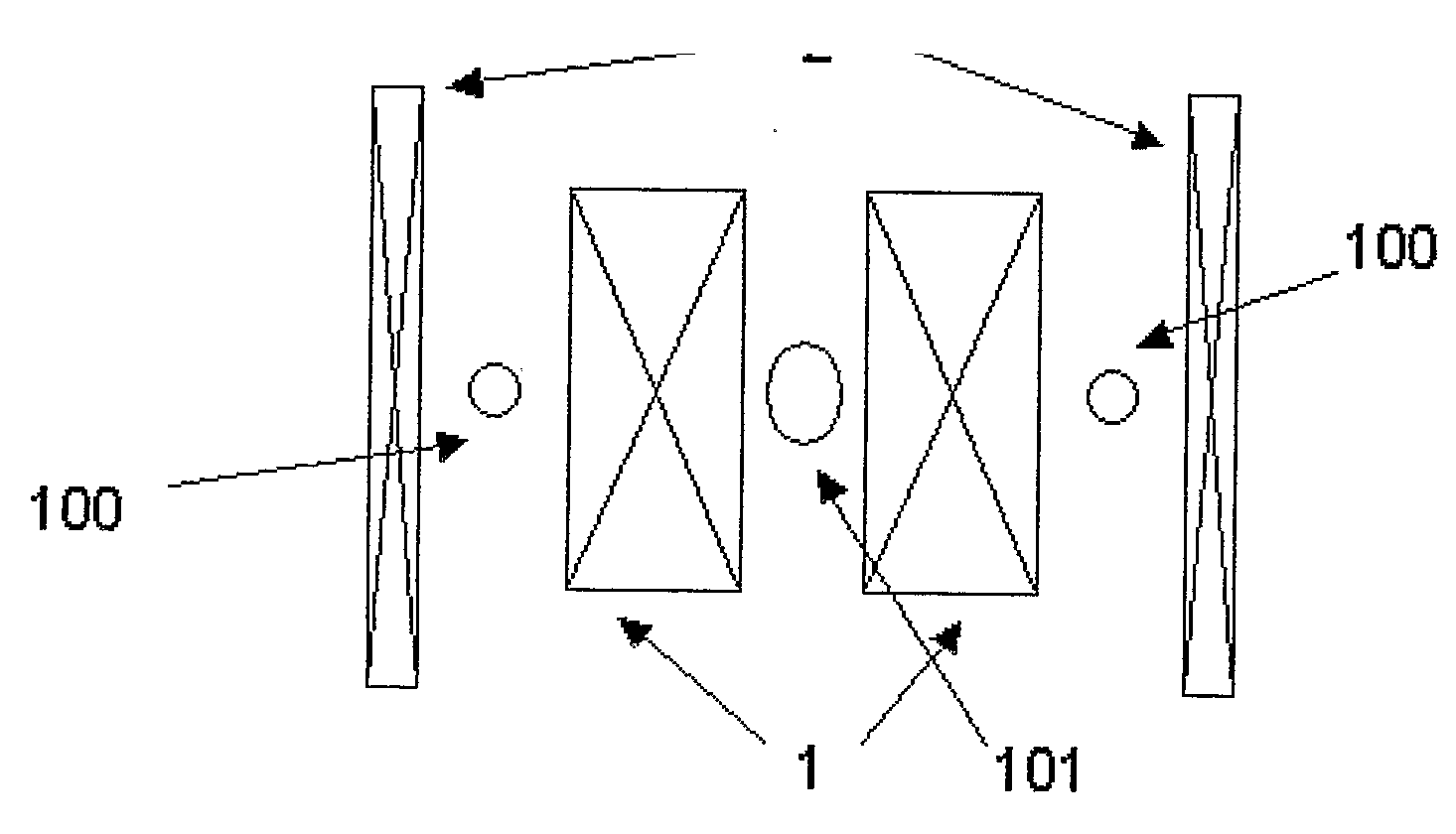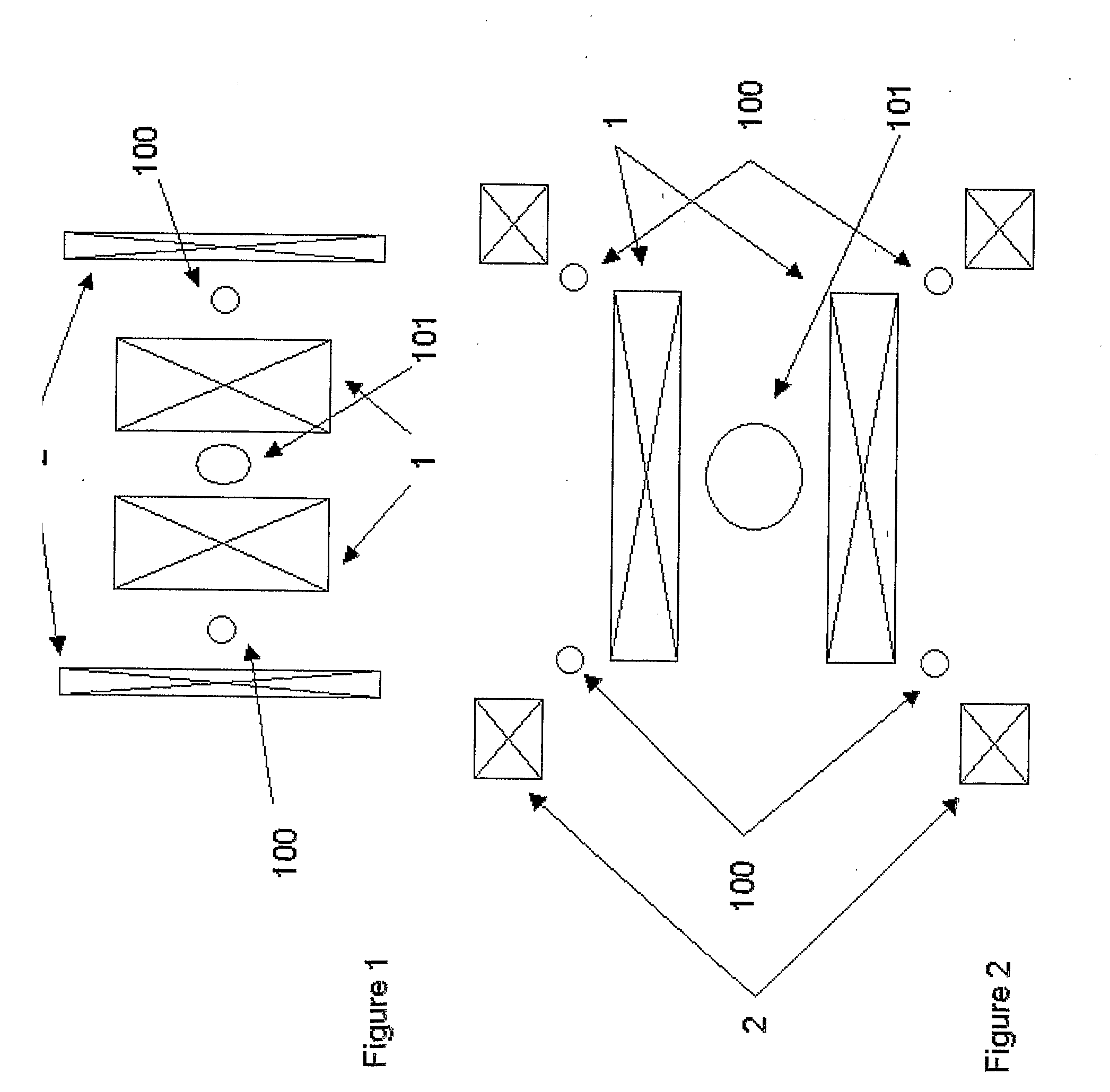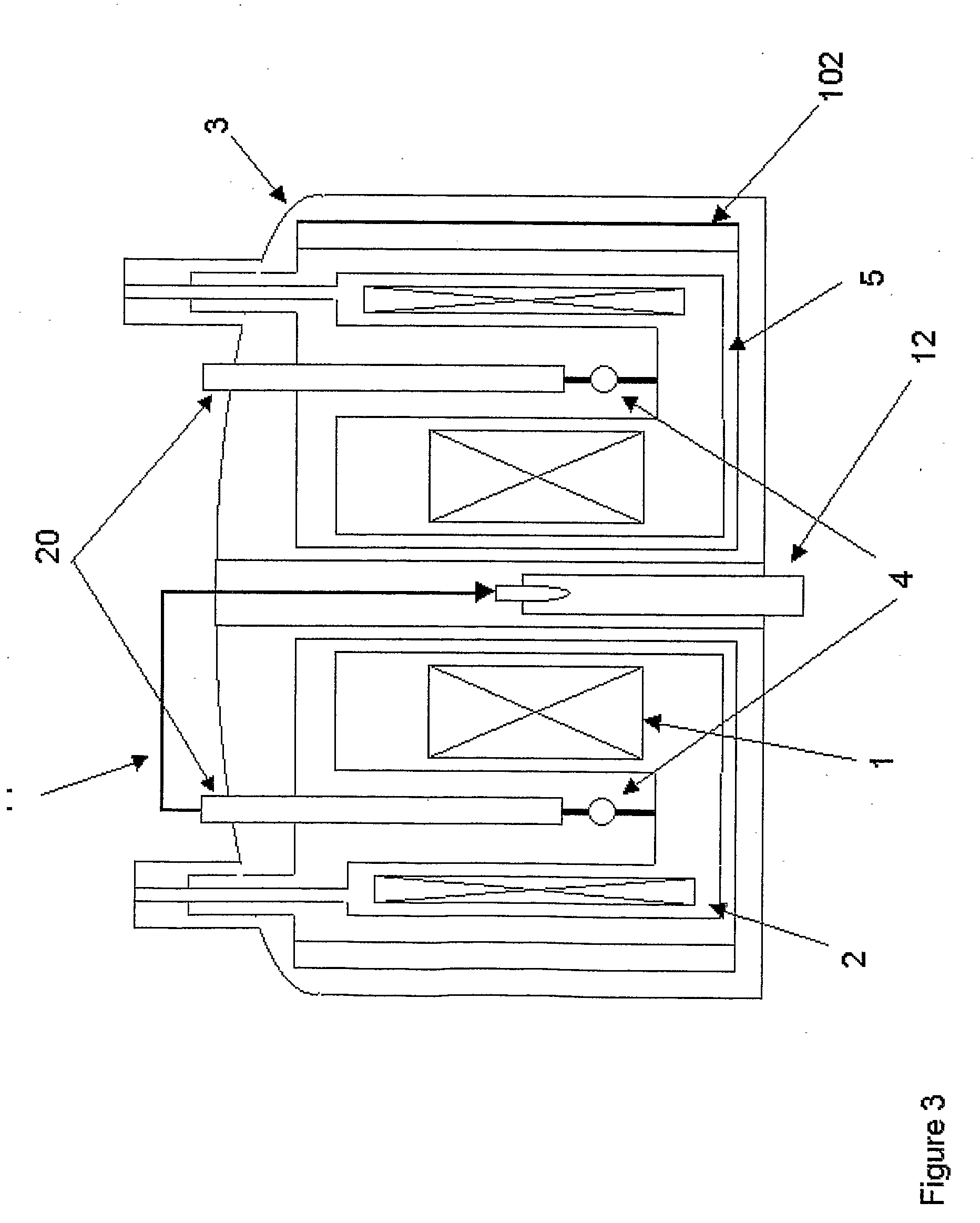Magnet assembly
a technology of magnets and assemblies, applied in the field of magnet assemblies, can solve the problems of poor sensitivity and hampered nmr, and achieve the effect of increasing efficiency and reducing the time required
- Summary
- Abstract
- Description
- Claims
- Application Information
AI Technical Summary
Benefits of technology
Problems solved by technology
Method used
Image
Examples
Embodiment Construction
[0038]FIG. 1 illustrates the typical structure of an actively shielded magnet which in this case comprises a pair of nested solenoids with opposing current directions. The inner solenoid is the main magnet (1), and the outer is the shield coil (2). The total amp-turns are chosen to cancel or partly cancel the total dipole moment, thus reducing the stray field of the magnet, whilst the spatial distribution of amp-turns is designed to produce a primary working region 101 of homogeneity in the bore. A secondary toroidal region 100 of homogeneity occurs because the return flux from the main magnet 1 is constrained within the annular gap to the shield coil 2.
[0039]In an NMR magnet for high field spectroscopy the shield coil is typically a simple cylindrical winding (FIG. 1), whilst in a magnetic resonance imaging (MRI) magnet, it comprises typically two or more annular ring coils (FIG. 2). The invention is intended to apply equally to NMR (in-vitro) and MRI (in-vivo) applications; in the...
PUM
 Login to View More
Login to View More Abstract
Description
Claims
Application Information
 Login to View More
Login to View More - R&D
- Intellectual Property
- Life Sciences
- Materials
- Tech Scout
- Unparalleled Data Quality
- Higher Quality Content
- 60% Fewer Hallucinations
Browse by: Latest US Patents, China's latest patents, Technical Efficacy Thesaurus, Application Domain, Technology Topic, Popular Technical Reports.
© 2025 PatSnap. All rights reserved.Legal|Privacy policy|Modern Slavery Act Transparency Statement|Sitemap|About US| Contact US: help@patsnap.com



